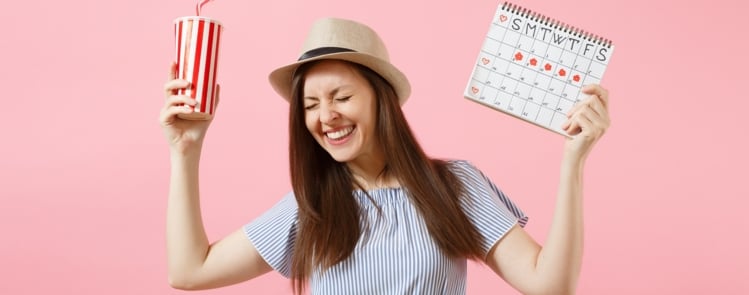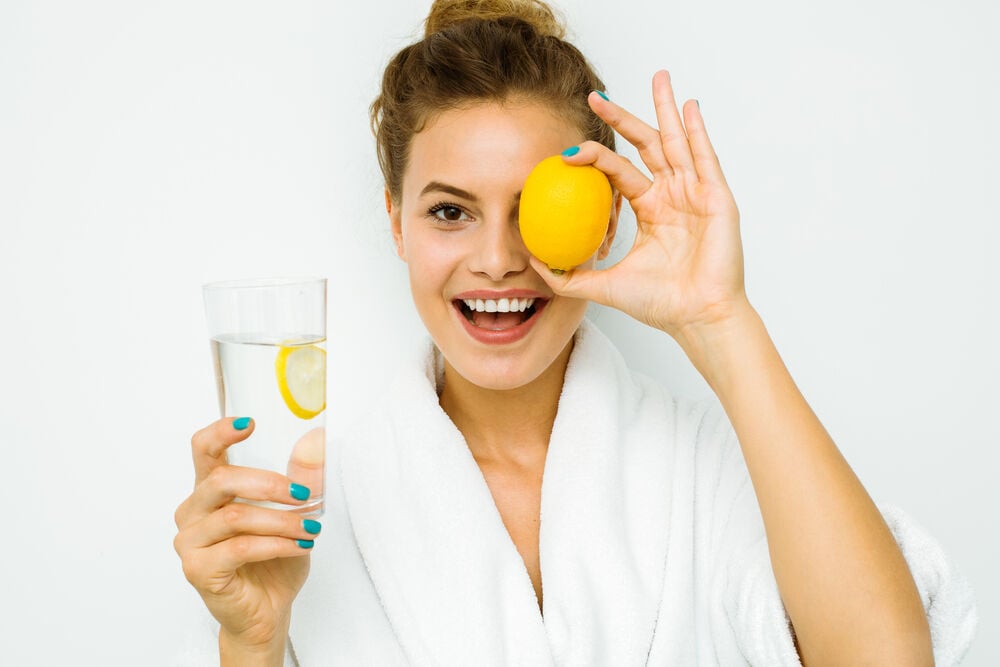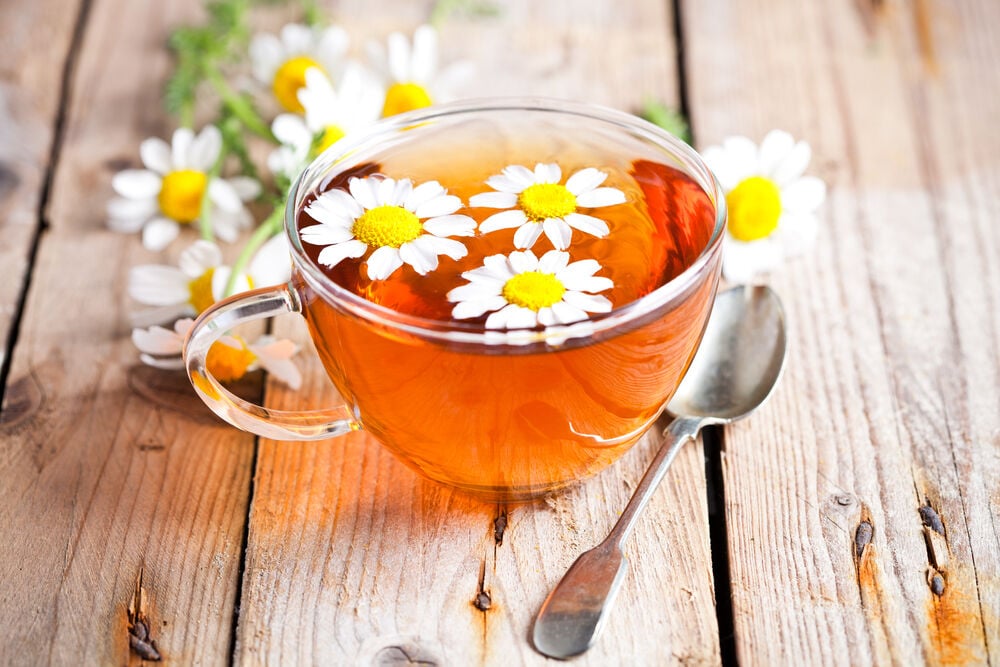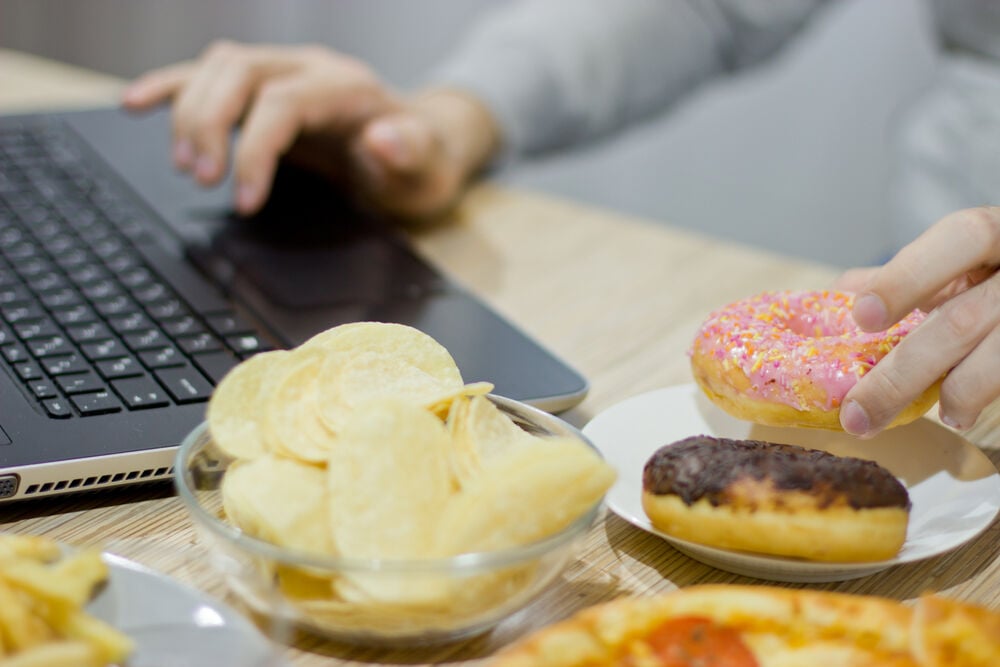Do you experience intense period cramping? Cramps are not only painful but also usually associated with fatigue and interfere with your ability to move around and go through your daily routines. If regular medication isn’t enough to help ease your symptoms, you may want to try modifying your diet. What foods might help to ease period cramps and which are best to avoid during your period? Flo compiled a list of foods to eat and foods to avoid if you are experiencing severe cramping.
-
Tracking cycle
-
Getting pregnant
-
Pregnancy
-
Help Center
-
Flo for Partners
-
Anonymous Mode
-
Flo app reviews
-
Flo Premium New
-
Secret Chats New
-
Symptom Checker New
-
Your cycle
-
Health 360°
-
Getting pregnant
-
Pregnancy
-
Being a mom
-
LGBTQ+
-
Quizzes
-
Ovulation calculator
-
hCG calculator
-
Pregnancy test calculator
-
Menstrual cycle calculator
-
Period calculator
-
Implantation calculator
-
Pregnancy weeks to months calculator
-
Pregnancy due date calculator
-
IVF and FET due date calculator
-
Due date calculator by ultrasound
-
Medical Affairs
-
Science & Research
-
Pass It On Project New
-
Privacy Portal
-
Press Center
-
Flo Accuracy
-
Careers
-
Contact Us
6 Foods That Help with Cramps


Every piece of content at Flo Health adheres to the highest editorial standards for language, style, and medical accuracy. To learn what we do to deliver the best health and lifestyle insights to you, check out our content review principles.
Foods that might help with cramps
In the run up to the day your period calculator predicts your next period is due, you might start to notice some cramping. For some, it happens every month like clockwork, while for others premenstrual cramping is a bit more sporadic.
Either way, if you’re looking for the best food for period cramps, you've come to the right place. The top line? Choose light, healthy fruits and vegetables that won’t be heavy in your stomach. Fruits and veggies, whole grains, legumes, nuts, and seeds can help decrease inflammation in the body and can help menstrual cramps.
The great news is the best foods for period cramps can often be found in your fridge! Top health foods on this list are common and great choices when you’re looking for what to eat when you have cramps. There are plenty of foods that might help with menstrual cramps.
If you’re looking to adjust your diet and stock up on foods that might help with cramps, here are some to try:
1. Bananas
Bananas are great for menstrual cramps.
Bananas are generally easy to find and known to be helpful for period cramps. They are rich in fiber and will help you have easy bowel movements. As a result, you may feel less bloated and experience less pain overall. Bananas also contain a lot of magnesium, which is known to reduce the severity of period cramps.
Bananas are also rich in natural sugars, so it’s best to eat them in moderation.
2. Lemons
Lemons are rich in vitamins, particularly vitamin C. Vitamin C helps your body absorb iron from your food into your bloodstream and tissues. Because you may be losing more red blood cells than your body can keep up with during your period, it may be helpful to have some extra vitamin C to boost iron absorption. Lemons also contain a lot of fiber, which makes them a good food for preventing muscle spasms.

Take a quiz
Find out what you can do with our Health Assistant
3. Oranges
Oranges are known as a top food for period cramps. Oranges contain more vitamin C than lemons, and they also contain magnesium, potassium, and vitamin D. In fact, oranges have almost as much of these nutrients as milk. A couple of oranges every day may help relieve period cramps and menstrual pain.
4. Watermelon
Watermelon is light and sweet. You can easily pop it into a blender and create a delicious smoothie. In addition to that, it is mainly water. Watermelon will quickly hydrate your body and add small amounts of natural sugars into your bloodstream, which might help with cramping.
5. Broccoli
Broccoli is one of the top foods that help with menstrual cramps. The fiber and iron in broccoli help fight period cramps. These nutrients might help with all menstrual pain, particularly in your lower abdomen.
6. Kale
Among the other healthy foods that relieve cramps, kale is also a great option. Kale is a good food for period cramps for the same reason as broccoli and other greens: it is rich in calcium and magnesium. Having a calcium deficiency can increase muscle spasms and contractions.
You can saute kale or add it to a smoothie. Either way, this vegetable might help boost your immune system and ease cramping pains.
What makes food so powerful in helping relieve period cramps? Nutrients in certain foods directly affect your hormones, nerves, and muscles. They can have a relaxing effect, which can result in both a better mood and less pain.

Drinks that help with cramps
You can use food to ease muscle spasms, but beverages can be effective as well. Here are a couple of drinks that help with cramps:
1. Water
The number one drink that might help you ease period cramps is water. You lose some of the water in your body when you bleed, and your pain can become worse when your body becomes dehydrated. Drinking enough water might help your muscles relax and help you avoid bloating and gas.
2. Chamomile
Chamomile tea is a great beverage for menstrual cramps. It also has anti-inflammatory properties, which further reduce cramping pains. Chamomile tea may also help with your mood, as it has a soothing impact on the nervous system.

3. Ginger tea
In addition to easing cramping pains, ginger tea can also help with nausea and bloating. Ginger is also known to be a good coffee replacement, as it can energize you and help you feel more awake.
4. Raspberry leaf tea
Raspberry leaf tea is not only tasty, but it also has anti-inflammatory properties that might help reduce period cramps.
5. Smoothies
Apple and spinach smoothies contain plenty of iron and magnesium, which are both responsible for nourishing the body quickly and relieving cramps and fatigue. During your period, you can experience fatigue, and it’s good to have as many foods as possible that are rich in iron and fiber, like leafy greens.
Magnesium found in bananas and some leafy greens can help relax your muscles, including your uterus. Mixing your favorite period-friendly fruits and veggies into a nourishing smoothie should definitely be on your to-do list.
Foods that can make cramps worse

A lot of foods that you normally eat don’t help with period cramps. Here’s a list of foods that make cramps worse:
1. Canned foods
Canned foods can be high in salt, which causes more bloating and cramping. In addition, they may have fewer nutrients. Refined products can also contain high amounts of unhealthy chemicals used to preserve the foods. So when you’re on your period, stick to healthy, fresh options.
2. Beans
Normally healthy and rich in fiber and vitamins, beans can upset your stomach during your period. It’s better to avoid eating beans or peas during your period and opt for lighter foods instead.
3. Candy
Candy usually doesn’t contain any healthy nutrients, and it’s also packed with sugar. Artificial sugar doesn’t help at all with period cramps. In fact, it can make them worse.
4. Fried foods
It’s better to avoid anything that will upset your stomach because your cramping pains may worsen at the same time. Fried foods are known to upset the stomach and interfere with healthy digestion. During your period, stick to lightly boiled, steamed, or grilled foods.
5. Milk and other dairy products
Milk and other dairy products can generally be healthy options. However, during your period, your body is particularly susceptible to inflammation. The saturated fats in dairy products can trigger inflammation, which can worsen your menstrual pain.
Nevertheless, the calcium in dairy products can help cramps by controlling your muscles’ nerve activity. Calcium deficiencies can increase muscle spasms. Depending on your needs, it might be a good idea to consume dairy products in moderation.
6. Fatty foods
Foods like bacon contain lots of saturated fats, while some substances found in fatty dark meat increase prostaglandins in your body, which constrict blood vessels and make muscles contract. This only induces cramping pains, so it’s better to stick to lean meats instead.
7. Caffeine
Caffeine can worsen pelvic pain before or during your period. It can also stimulate stress and irritability.
foods to avoid during cramps

Make healthy food choices
Seeing the link between your symptoms and the food you eat can help you adjust your diet.
Bottom line
One of our top tips to survive period cramps is to opt for light, nutrient-dense foods. These foods might help with abdominal pain during your period.
Aside from choosing the right foods to eat during your period to avoid cramps, focus on having multiple, regular meals.
Try not to skip meals, as feeling hungry will only worsen the cramping pains. Make sure to drink enough water, because dehydration adds to muscle spasms, resulting in more intense cramping.
Be kind to your body during your period, get as much rest as you can, and stay comfortable whenever you don’t have to be active.


Hey, I'm Anique
I started using Flo app to track my period and ovulation because we wanted to have a baby.


The Flo app helped me learn about my body and spot ovulation signs during our conception journey.


I vividly
remember the day
that we switched
Flo into
Pregnancy Mode — it was
such a special
moment.
Real stories, real results
Learn how the Flo app became an amazing cheerleader for us on our conception journey.
References
F;, Bajalan Z;Alimoradi Z;Moafi. “Nutrition as a Potential Factor of Primary Dysmenorrhea: A Systematic Review of Observational Studies.” Gynecologic and Obstetric Investigation, U.S. National Library of Medicine, 2019, pubmed.ncbi.nlm.nih.gov/30630172/.
“Office of Dietary Supplements - Magnesium.” NIH Office of Dietary Supplements, U.S. Department of Health and Human Services, 2020, ods.od.nih.gov/factsheets/Magnesium-HealthProfessional/.
Saei Ghare Naz, Marzieh, et al. “The Effect of Micronutrients on Pain Management of Primary Dysmenorrhea: a Systematic Review and Meta-Analysis.” Journal of Caring Sciences, Tabriz University of Medical Sciences, 1 Mar. 2020,
www.ncbi.nlm.nih.gov/pmc/articles/PMC7146731/.“ Using Foods Against Menstrual Pain.” Physicians Committee for Responsible Medicine, www.pcrm.org/good-nutrition/nutrition-information/using-foods-against-menstrual-pain.
Pattanittum, Porjai, et al. “Dietary Supplements for Dysmenorrhoea.” Cochrane Database of Systematic Reviews, 2016.




